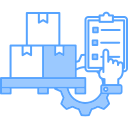Choosing the Right Platform for Warehouse Automation
Today’s selected theme: Choosing the Right Platform for Warehouse Automation. If you’re weighing options, this page brings clarity, lived experience, and practical guidance so you can choose confidently. Share your priorities in the comments and subscribe for deep-dive follow‑ups.




Mapping Your Operations to Platform Fit
Map receiving, putaway, replenishment, picking, value‑added services, packing, and shipping as discrete flows with triggers and exceptions. Identify choke points, travel distances, and handoffs. The right platform aligns to these realities instead of forcing you into rigid templates that limit productivity.

Open standards, APIs, and your data
Insist on documented REST or gRPC APIs, event schemas, and SDKs. Verify sandbox access, rate limits, and versioning policies. Your operational data should be portable for BI, forecasting, and audits, not trapped behind tiers or bespoke exports that slow decisions.
Total cost of ownership, not just license fees
Model five years of spend: licenses, implementation, customization, MHE integration, training, change management, support, and hardware refresh. Include scaling costs for new sites, SKU growth, and additional devices. Transparent pricing helps you avoid surprises that erode your ROI story.
Architecture Choices: Cloud, Edge, and Everything Between
Reliability and graceful degradation
Define SLOs for uptime, task latency, and recovery. Look for offline modes at the edge, queue durability, and replay mechanisms. Shadow deployments and chaos drills reveal whether the platform keeps totes moving when a switch dies or a carrier link flaps.
Data and analytics that drive action
Demand unified real‑time metrics and historical trends with drill‑through to task detail. Forecasting and simulation should use your operational data, not synthetic demos. Native connectors to your BI stack prevent dashboard sprawl and enable faster continuous improvement cycles.
Security and compliance baked in
Require role‑based access, least privilege, network segmentation, and audit trails. Verify SOC 2 or ISO 27001, patch cadence, and secure development practices. If you handle regulated goods, ensure compliance features are configurable without custom code that complicates upgrades.

Favor plugin architectures where new robots, AS/RS, or conveyors integrate via certified adapters. Standard interfaces reduce project risk and let you benchmark vendors. Swapping technologies should be a configuration change, not an existential, year‑long rewrite of core processes.
Scaling Without Regrets
From Pilot to Full Rollout: Change That Sticks
Pilot design and measurable outcomes
Define hypotheses, baselines, and success thresholds for pick rate, travel time, order accuracy, and exception dwell. Instrument everything. A time‑boxed pilot with clear exit criteria prevents endless tinkering and builds the evidence executives and operators need to commit.
Training, adoption, and frontline trust
Engage operators early through ride‑alongs and feedback cycles. Provide role‑specific training, quick‑reference guides, and safe practice zones. Celebrate small wins publicly. When frontline experts feel heard, they surface insights that turn a decent deployment into a durable competitive advantage.
Go‑live playbook and continuous improvement
Stagger cutovers, staff hypercare, and maintain a rollback path. Track daily metrics and hold blameless postmortems. Iterate rules weekly, not yearly. Treat the platform as a living system that learns from reality and gets sharper with every shift.
